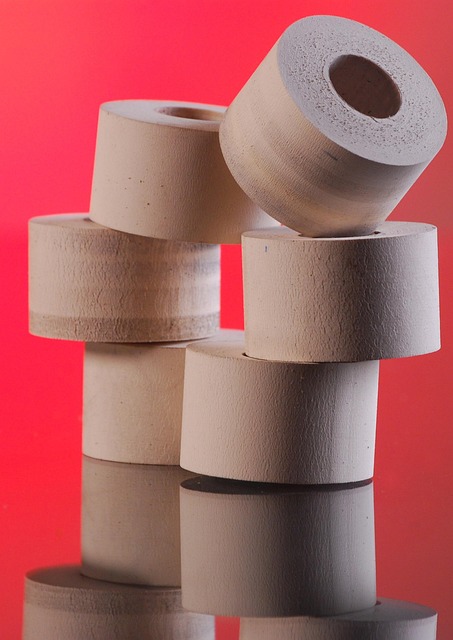Fat freezing (cryolipolysis) is a non-invasive body contouring treatment made popular by FDA-approved CoolSculpting. This method uses targeted cooling technology to break down and eliminate unwanted fat cells, offering a safe and effective alternative to surgery with minimal downtime. While generally safe when performed by qualified professionals, side effects like redness, swelling, and numbness may occur and usually resolve within a week. Proper aftercare, including hydration, gentle exercise, and avoiding strenuous activities, is crucial for optimal results and safe recovery. Choosing a reputable clinic with qualified staff, adhering to dietary guidelines, and maintaining regular follow-ups ensure positive outcomes and prevent weight regain. FDA-approved CoolSculpting has earned a reputation as an effective and safe method for reducing targeted fat deposits in areas like the abdomen, flanks, and thighs.
Fat freezing, or cryolipolysis, has emerged as a popular non-invasive body contouring treatment. This FDA-approved procedure, most commonly known through its brand name CoolSculpting, offers a safer and more effective alternative to surgical options. By targeting and freezing fat cells, it helps reduce stubborn areas of fat without surgery, downtime, or side effects. This article delves into the safety aspects of fat freezing, from understanding the process and FDA approval to choosing the right clinic and real patient experiences.
Understanding Fat Freezing: A Non-Invasive Body Contouring Treatment

Fat freezing, or cryolipolysis, is a non-invasive body contouring treatment that has gained popularity as an alternative to surgical procedures. It involves the targeted cooling of fat cells to break them down and eliminate them from the body. One well-known and FDA-approved version of this technology is CoolSculpting, which uses controlled cooling to freeze and destroy unwanted fat cells.
This procedure offers a safer and more comfortable option for those seeking to reduce localized fat deposits without surgery or downtime. It’s non-surgical, so there’s no recovery period, making it an attractive choice for people who want to sculpt their bodies discreetly and effectively.
FDA Approval and Safety Standards for CoolSculpting

CoolSculpting, a popular fat freezing treatment, boasts FDA approval, ensuring its safety and effectiveness for non-invasive body contouring. The FDA sets rigorous standards for medical devices like CoolSculpting to guarantee consumer protection. These standards encompass comprehensive testing and clinical trials to verify both the device’s safety and its ability to deliver on promised results.
The FDA approval process involves evaluating the device’s design, manufacturing practices, and performance data from clinical studies. This meticulous approach ensures that CoolSculpting not only reduces targeted fat cells but also minimizes risks such as skin irritation, numbness, or tissue damage—common concerns associated with other less regulated fat-freezing treatments.
Who is a Suitable Candidate for Fat Freezing?

Fat freezing, or cryolipolysis, is a non-invasive body contouring treatment that has gained popularity due to its effectiveness and minimal downtime. However, not everyone is a suitable candidate for this procedure. The ideal candidate for fat freezing is an individual who has targeted areas of excess fat that are resistant to diet and exercise. It’s particularly suited for those with healthy weight and skin tone, as it works by crystallizing fat cells, which are then naturally eliminated by the body.
One well-known and FDA-approved treatment in this field is CoolSculpting, a brand that has revolutionized the industry. This procedure is not recommended for pregnant or breastfeeding women, individuals with certain medical conditions like cold sensitivity or blood clotting disorders, or those who have recently experienced significant weight loss or gain. It’s crucial to consult with a qualified healthcare provider to determine if fat freezing is the right choice for your specific concerns and health history.
Common Side Effects and How to Manage Them

Fat freezing, or cryolipolysis, is generally considered safe when performed by qualified professionals using FDA-approved devices like CoolSculpting. However, as with any procedure, there can be side effects. Common temporary issues include redness, swelling, and numbness at the treatment site, which typically resolve within a week. Some patients also experience lightheadedness or headaches, but these are usually mild and short-lived.
To manage these side effects, it’s important to stay hydrated by drinking plenty of water. Applying ice packs can help reduce swelling and numb any discomfort. Over-the-counter pain relievers like ibuprofen can alleviate headaches or mild pain. It’s crucial to follow the treatment provider’s aftercare instructions precisely and schedule a consultation if symptoms persist or worsen beyond a week.
Potential Risks and Complications: What You Need to Know

Fat freezing, or cryolipolysis, is a popular non-invasive weight loss procedure, but it’s crucial to be aware of potential risks and complications before undergoing this treatment. While FDA-approved cooling systems like CoolSculpting are generally safe when administered by trained professionals, there can still be side effects. Common temporary reactions include redness, swelling, bruising, and numbness at the treatment site, which typically subside within a few days.
Less common but more serious complications may include tissue damage, nerve injuries, and in rare cases, an infection. It’s essential to choose a reputable clinic that employs qualified professionals who can assess your suitability for fat freezing and guide you through potential risks. Always discuss any concerns or medical conditions with your provider before the procedure.
Before and After Care: Ensuring Optimal Results

After your Fat Freezing treatment, proper aftercare is crucial for achieving optimal results and ensuring a safe recovery. It’s recommended to stay hydrated by drinking plenty of water, as this aids in flushing out toxins and supports overall healing. Gentle exercise, such as walking or yoga, can also promote blood circulation and help reduce any lingering discomfort or swelling. Avoid strenuous activities and extreme temperatures (hot or cold) for at least 24 hours post-treatment to prevent potential irritation.
Before your session, preparing your body can enhance the procedure’s effectiveness. This includes maintaining a healthy diet, focusing on nutrient-rich foods, and staying well-hydrated. Some professionals may also suggest avoiding certain medications or supplements that could increase bleeding risk. Following these pre-care guidelines, along with post-treatment instructions, will contribute to a positive experience with FDA-approved CoolSculpting procedures, ensuring the best possible outcomes.
Long-Term Effects and Maintenance of Results

Fat freezing, or cryolipolysis, is generally considered safe when performed by qualified professionals using FDA-approved devices like CoolSculpting. However, as with any medical procedure, there can be potential long-term effects. Some individuals may experience temporary numbness or sensitivity in the treated areas, and in rare cases, mild swelling or changes in skin tone. These side effects are usually mild and resolve within a few days to weeks.
Maintenance of results varies based on individual body types and lifestyle factors. While fat freezing can effectively reduce fat cells in targeted areas, it’s important to maintain a healthy diet and regular exercise routine to prevent weight regain. Regular follow-up sessions with a healthcare provider or specialist can help ensure optimal results and guide any necessary touch-ups.
Choosing the Right Clinic: Safety First

When considering fat freezing treatments, selecting the right clinic is paramount for ensuring safety and effectiveness. It’s crucial to look for facilities offering FDA-Approved CoolSculpting procedures, as this ensures the technology has undergone rigorous testing and meets stringent safety standards. Reputable clinics will have qualified professionals who are trained in the latest techniques and adhere to strict hygiene protocols.
Beyond approval status, verify the clinic’s reputation and patient feedback. Research their experience with CoolSculpting, the type of equipment used, and post-treatment care procedures. A well-established clinic with a history of successful treatments and satisfied clients is more likely to prioritize safety and deliver desired results.
Real Stories: Patient Experiences and Successes

Fat freezing, also known as cryolipolysis, has gained popularity in recent years as a non-invasive weight loss solution. Many patients have shared their real-life experiences with this procedure, highlighting its effectiveness and safety. One of the key aspects that set fat freezing apart is its FDA-Approved status for specific areas like the abdomen, flanks, and thighs when performed using CoolSculpting technology.
These patient stories often revolve around significant weight loss, improved body confidence, and a boost in overall well-being. Many report minimal downtime and discomfort during and after the treatment, making it an attractive option for those seeking a more gentle approach to fat reduction compared to traditional surgical procedures. Real-life successes serve as powerful testimonials, encouraging others to consider fat freezing as a viable and safe path toward their fitness goals.
